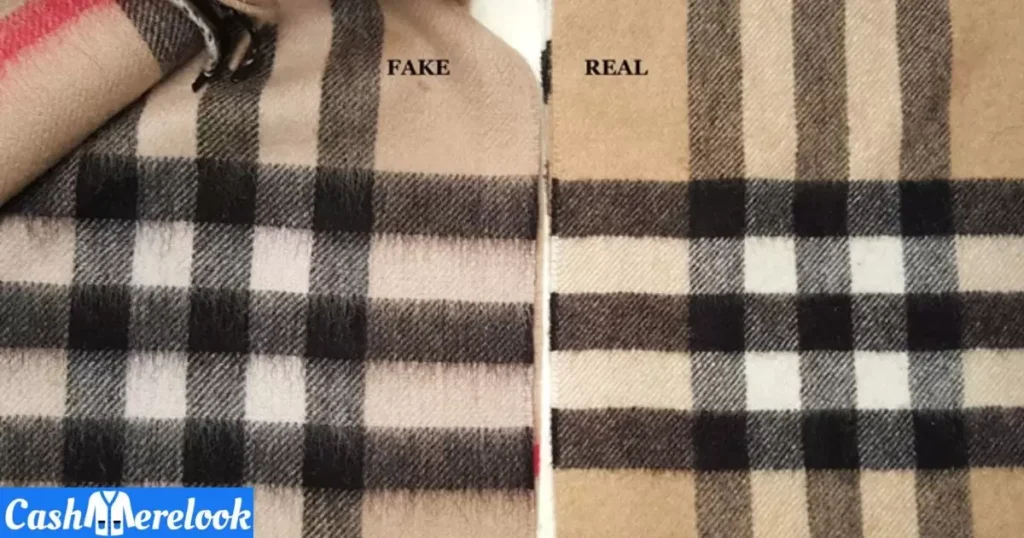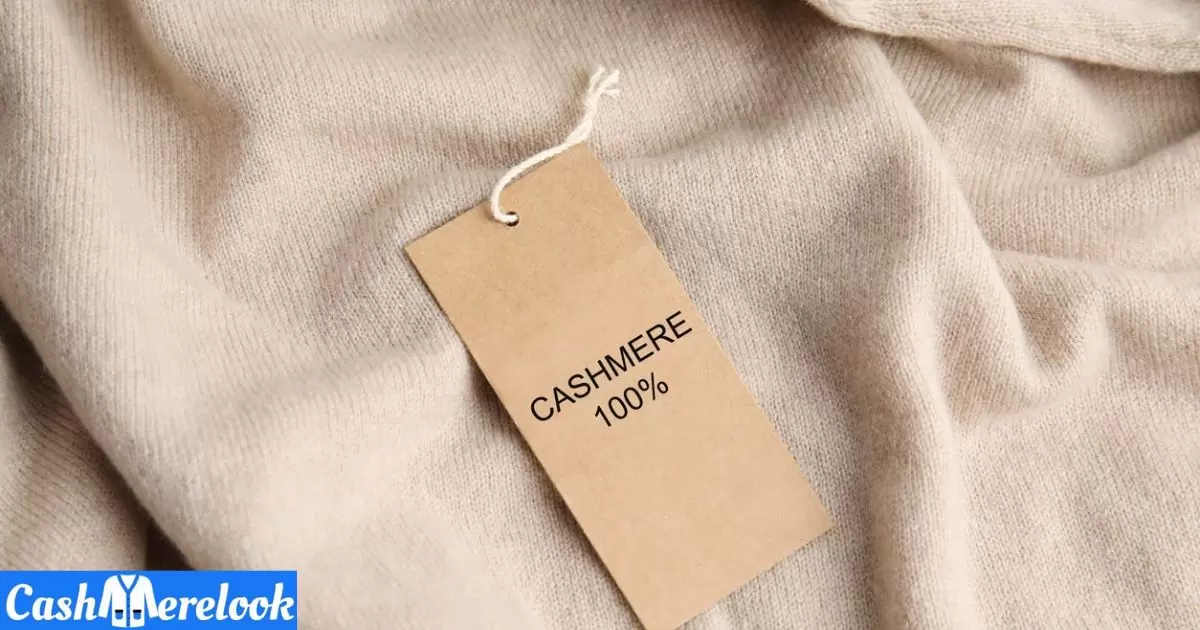Real cashmere is a luxurious and highly sought-after material, known for its softness and warmth. It is derived from the fine undercoat fibers of cashmere goats, making it a premium and coveted textile.
Real cashmere undergoes rigorous testing, ensuring its authenticity and high quality. In the quest for a cozy cashmere scarf, understanding the intricacies of the fabric becomes essential.
When shopping for pure cashmere, consider the various tests that guarantee its authenticity. From the flame test to lab tests, these examinations ensure that you’re investing in a high-quality product. Understanding the fabric structure and passing the stretch, feel, look, and even smell tests contribute to the assurance of obtaining real cashmere.
Testing Real Cashmere with Simple Methods

Testing cashmere is a breeze with simple methods. Employ the flame test to check for authenticity, ensuring genuine cashmere. The stretch test guarantees quality, confirming the durability and resilience of the fabric.
Next, feel the cashmere; its softness is a clear indicator of its authenticity. The look test examines the fabric’s appearance, helping you spot any inconsistencies. Lastly, the smell test ensures your cashmere doesn’t carry a burnt odor, assuring a pure and high-quality product.
Fast and Simple Checks to Verify the Authenticity of Your Real Cashmere

1. Stretch Test: Real cashmere is known for its resilience. Gently stretch the fabric and observe its ability to regain the original shape. Authentic cashmere bounces back, showcasing the quality and durability of the fibers.
2. Feel Test: The luxurious softness of genuine cashmere is unmistakable. Run your fingers across the fabric to experience its silky-smooth texture. The fine fibers contribute to a unique and sumptuous feel, providing a tactile confirmation of authenticity.
3. Look Test: Authentic cashmere often exhibits a uniform appearance. Examine the fabric closely for consistent color and craftsmanship. Genuine cashmere meets high standards in terms of both visual appeal and quality of construction.
4. Flame Test: Hold a small piece of the fabric over a flame briefly. Real cashmere, being a natural fiber, should not produce a burnt smell. Instead, it should have an odor similar to burnt hair. This test verifies the presence of genuine cashmere fibers.
5. Smell Test: Real cashmere should have a natural, neutral scent. Perform a quick sniff test to ensure there are no unpleasant or synthetic odors, further confirming the authenticity of the material.
6. Water Test: Place a few drops of water on the fabric. Genuine cashmere tends to absorb water slowly, while synthetic fibers may repel it. This test helps identify the natural absorption properties of real cashmere.
7. Pilling Test: Rub the fabric gently to assess its reaction. Real cashmere typically pills less than synthetic alternatives, maintaining a smoother appearance over time. This test provides insights into the long-term quality of the material.
By incorporating these tests – including the stretch, feel, look, flame, smell, water, and pilling tests – you can perform a comprehensive examination to ensure the authenticity and high quality of your cashmere.
LAB TEST
The flame test stands as a reliable method to discern the authenticity of cashmere, delving into the intricate details of fiber composition. Here’s a comprehensive guide on executing the flame test and interpreting the results:
Procedure
- Fabric Sample Preparation
- Begin by securing a small, representative sample of the cashmere fabric to be tested.
- Ensure the testing environment is devoid of flammable materials and well-ventilated.
- Safe Execution
- Use non-flammable tweezers or a tool to hold one end of the fabric securely.
- Keep a controlled and safe space to conduct the flame test, preventing accidental fires.
Execution
- Application of Flame
- Employ a lighter or match to gently expose a selected section of the fabric to the flame.
- Observe the fabric’s reaction to the heat, noting specific details during the test.
Observation
- Burning Characteristics
- Genuine cashmere, being a natural fiber, tends to burn slowly and may self-extinguish.
- Synthetic materials, on the other hand, may ignite more readily and exhibit different burning characteristics.
- Residue and Smell
- Authentic cashmere leaves behind a fine ash residue after burning.
- The distinctive smell of burnt hair, rather than synthetic odors, is a key indicator of genuine cashmere.
Results
- Slow Burning and Self-Extinguishing
- If the fabric burns slowly and self-extinguishes, it suggests the presence of real cashmere fibers.
- Distinctive Characteristics
- Genuine cashmere’s burning behavior, ash residue, and unique smell contribute to a conclusive assessment.
Caution
- Exercise caution throughout the test to prevent accidents.
- Perform the flame test in a well-ventilated area to ensure safety.
Conducting the flame test with attention to detail allows you to scrutinize the intricacies of your cashmere’s fiber composition. This method serves as a precise and insightful tool in confirming the authenticity of your cherished cashmere, offering you a deeper understanding and confidence in your purchase.
FLAME TEST

The flame test serves as a nuanced and insightful method to scrutinize the authenticity of cashmere, offering a more profound understanding of its fiber composition. Here’s an in-depth exploration of the flame test, providing clarity on its execution and interpretation.
Getting Started
- Selecting a Sample
- Begin by acquiring a small but representative sample of the cashmere fabric for testing.
- Ensure the testing environment is free from flammable materials and well-ventilated.
Hold Steady
- Secure Handling
- Use non-flammable tweezers or a tool to securely hold one end of the fabric during the test.
- Establish a controlled and safe space to minimize the risk of accidents.
Ignite with Care
- Gentle Exposure
- Employ a lighter or match to gently expose a specific section of the fabric to the flame.
- Exercise caution to avoid unintended fires, emphasizing safety throughout the test.
Reading the Flames
- Burning Characteristics
- Genuine cashmere, being a natural fiber, tends to burn slowly and may self-extinguish.
- Synthetic materials, in contrast, may ignite more readily and display different burning behaviors.
Ash and Aroma
- Ash Residue
- Authentic cashmere leaves behind a fine ash residue after burning, indicating its natural fiber composition.
- Observe the color and texture of the ash for additional insights.
- Distinctive Smell
- The characteristic burnt hair smell, as opposed to synthetic odors, is a notable sign of genuine cashmere.
- The olfactory examination complements visual observations in the verification process.
Results
- Conclusive Indicators
- Slow burning, self-extinguishing, unique ash characteristics, and a distinct smell collectively contribute to a conclusive assessment.
- Genuine cashmere, with these traits, stands out in the aftermath of the flame test.
Caution
- Safety Measures
- Emphasize caution throughout the test to prevent accidents.
- Perform the flame test in a well-ventilated area, prioritizing safety in the process.
The flame test, explored in detail, unveils the intricacies of your cashmere’s fiber composition. By understanding the nuances of the burning process, ash residue, and characteristic smell, you can confidently leverage the flame test as a precise tool in authenticating your cherished cashmere.
Ultra-Fine Fiber Inspection (Microscopy Test)
- Sample Preparation
- Cut a small, representative sample from the cashmere fabric.
- Ensure the sample is free from any contaminants or foreign fibers.
- Microscopic Examination
- Utilize a high-powered microscope for detailed fiber inspection.
- Examine the sample at various magnifications to capture ultra-fine details.
- Fiber Identification
- Identify individual fibers based on their characteristics.
- Genuine cashmere fibers exhibit distinct patterns and features under magnification.
- Measurement of Fiber Characteristics
- Measure the length, diameter, and other relevant characteristics of the fibers.
- Compare measurements to known standards for authentic cashmere.
- Quality Assessment
- Evaluate the condition of the fibers, looking for signs of wear, damage, or irregularities.
- Assess the overall quality of the fabric based on microscopic observations.
- Results Documentation
- Record detailed findings, including fiber measurements, characteristics, and any notable observations.
- Document any anomalies or features that may impact the authenticity assessment.
- Expert Analysis
- Submit the findings to textile experts or specialists for further analysis.
- Seek input on the observed characteristics and their alignment with genuine cashmere standards.
- Insights
- The Ultra-Fine Fiber Inspection provides an exceptionally detailed analysis.
- It is particularly valuable for discerning intricate details in high-quality or specialty cashmere items.
While the Ultra-Fine Fiber Inspection is a meticulous and specialized process, it offers unparalleled insights into the composition and quality of cashmere fibers, making it a valuable tool for in-depth authenticity assessments.
Mass Spectrometry Analysis
- Sample Collection
- Obtain a representative sample of the cashmere fabric.
- Ensure the sample is clean and devoid of any contaminants.
- Laboratory Setup
- Choose a laboratory equipped with Mass Spectrometry instruments and experienced analysts.
- Provide detailed information about the sample, including its origin and any known treatments.
- Sample Preparation
- Prepare the cashmere sample for analysis, which may involve extraction of fibers or specific components.
- Ensure the sample is in a form compatible with Mass Spectrometry.
- Mass Spectrometry Analysis
- Utilize Mass Spectrometry to ionize and analyze the molecular composition of the sample.
- Identify unique biomarkers or isotopic patterns associated with genuine cashmere.
- Isotope Ratio Analysis
- Conduct isotope ratio analysis to determine the ratio of isotopes present in the sample.
- Genuine cashmere has characteristic isotope ratios reflective of its natural origin.
- Comparative Analysis
- Compare the obtained results with known databases or standards for authentic cashmere.
- Identify any deviations or unique characteristics that may indicate authenticity.
- Expert Interpretation
- Engage experts in Mass Spectrometry and textile analysis to interpret the results.
- Seek insights into the significance of observed biomarkers or isotopic patterns.
- Detailed Report
- Compile a comprehensive report detailing the Mass Spectrometry analysis findings.
- Include information on identified biomarkers, isotope ratios, and expert interpretations.
- Insights
- Mass Spectrometry analysis provides a highly precise and scientific approach.
- It offers insights into the molecular composition, allowing for advanced authentication of cashmere.
While Mass Spectrometry analysis is a sophisticated and resource-intensive method, it stands as a powerful tool for in-depth assessment, particularly in cases where the utmost precision and scientific scrutiny are required.
FAQ’s
What is real cashmere made of?
Real cashmere is made from the fine, downy fibers obtained from the undercoat of cashmere goats.
What is real cashmere, and how is it sourced?
Real cashmere is a luxurious natural fiber obtained from the undercoat of cashmere goats through a delicate combing process.
How can I distinguish between genuine cashmere and imitations in the market?
Look for certifications, check the fiber’s fineness, and perform tests like the flame and water tests; genuine cashmere has specific qualities that differ from synthetic alternatives.
Are there specific care instructions for maintaining the quality of real cashmere products?
Yes, hand wash in cold water with a gentle detergent, avoid wringing or stretching, and store folded to maintain the shape and softness of real cashmere items.
Conclusion
Real cashmere comes from the soft undercoat of special goats and feels luxurious. To tell it apart, look for certifications, check its softness, and perform simple tests like the flame and water tests. Taking care of real cashmere involves gentle washing and proper storage, ensuring it stays soft and beautiful for a long time.












